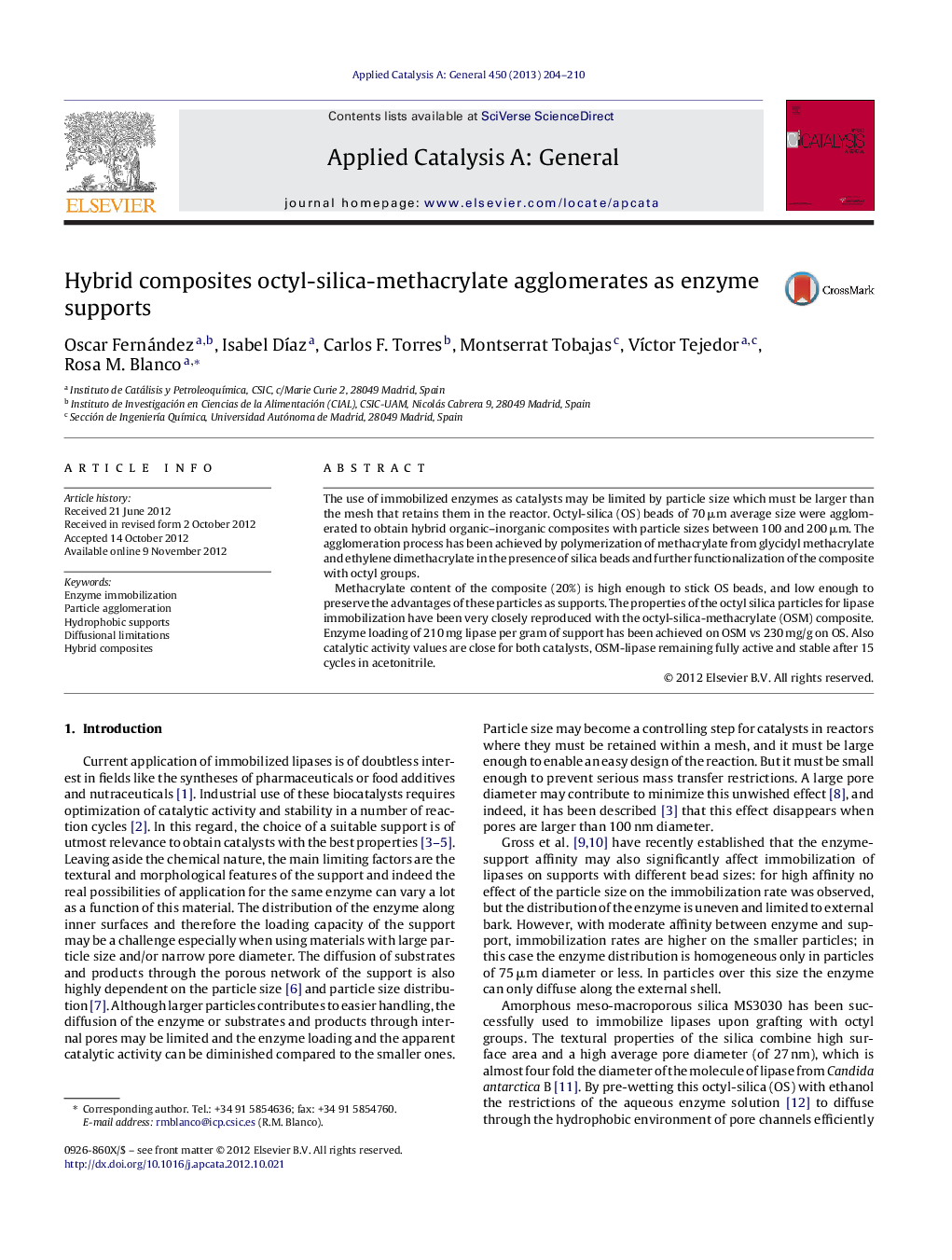| Article ID | Journal | Published Year | Pages | File Type |
|---|---|---|---|---|
| 40602 | Applied Catalysis A: General | 2013 | 7 Pages |
The use of immobilized enzymes as catalysts may be limited by particle size which must be larger than the mesh that retains them in the reactor. Octyl-silica (OS) beads of 70 μm average size were agglomerated to obtain hybrid organic–inorganic composites with particle sizes between 100 and 200 μm. The agglomeration process has been achieved by polymerization of methacrylate from glycidyl methacrylate and ethylene dimethacrylate in the presence of silica beads and further functionalization of the composite with octyl groups.Methacrylate content of the composite (20%) is high enough to stick OS beads, and low enough to preserve the advantages of these particles as supports. The properties of the octyl silica particles for lipase immobilization have been very closely reproduced with the octyl-silica-methacrylate (OSM) composite. Enzyme loading of 210 mg lipase per gram of support has been achieved on OSM vs 230 mg/g on OS. Also catalytic activity values are close for both catalysts, OSM-lipase remaining fully active and stable after 15 cycles in acetonitrile.
Graphical abstractFigure optionsDownload full-size imageDownload high-quality image (170 K)Download as PowerPoint slideHighlights► Agglomeration of octyl silica particles led to obtain larger and handy beads. ► Enzyme loading capacity of agglomerates is very close to isolated particles. ► Catalytic activities of isolated and agglomerated biocatalysts are also very close. ► Diffusional restrictions do not increase in the larger size beads. ► Agglomeration keeps advantages of silica beads and improves applicability.
